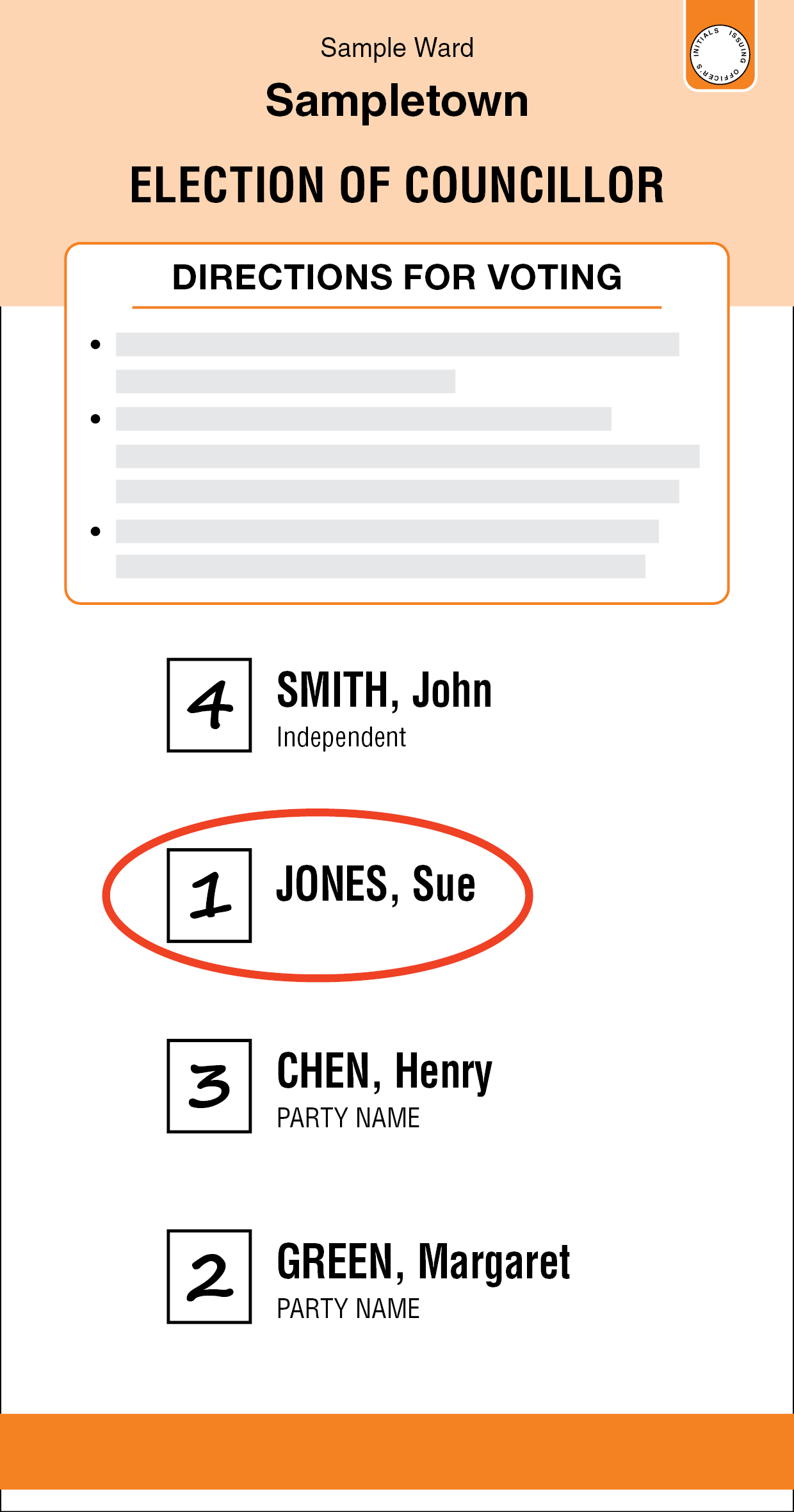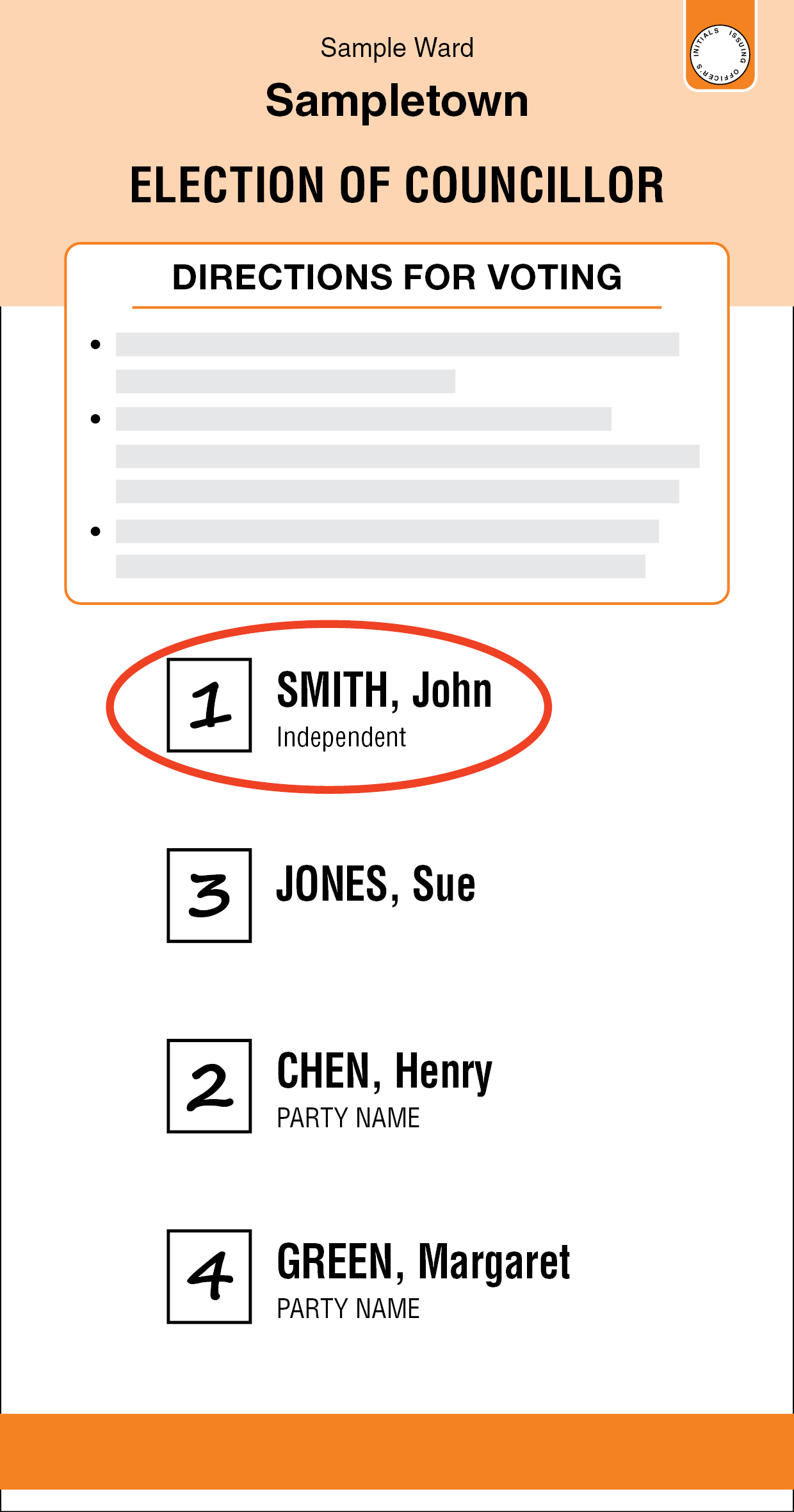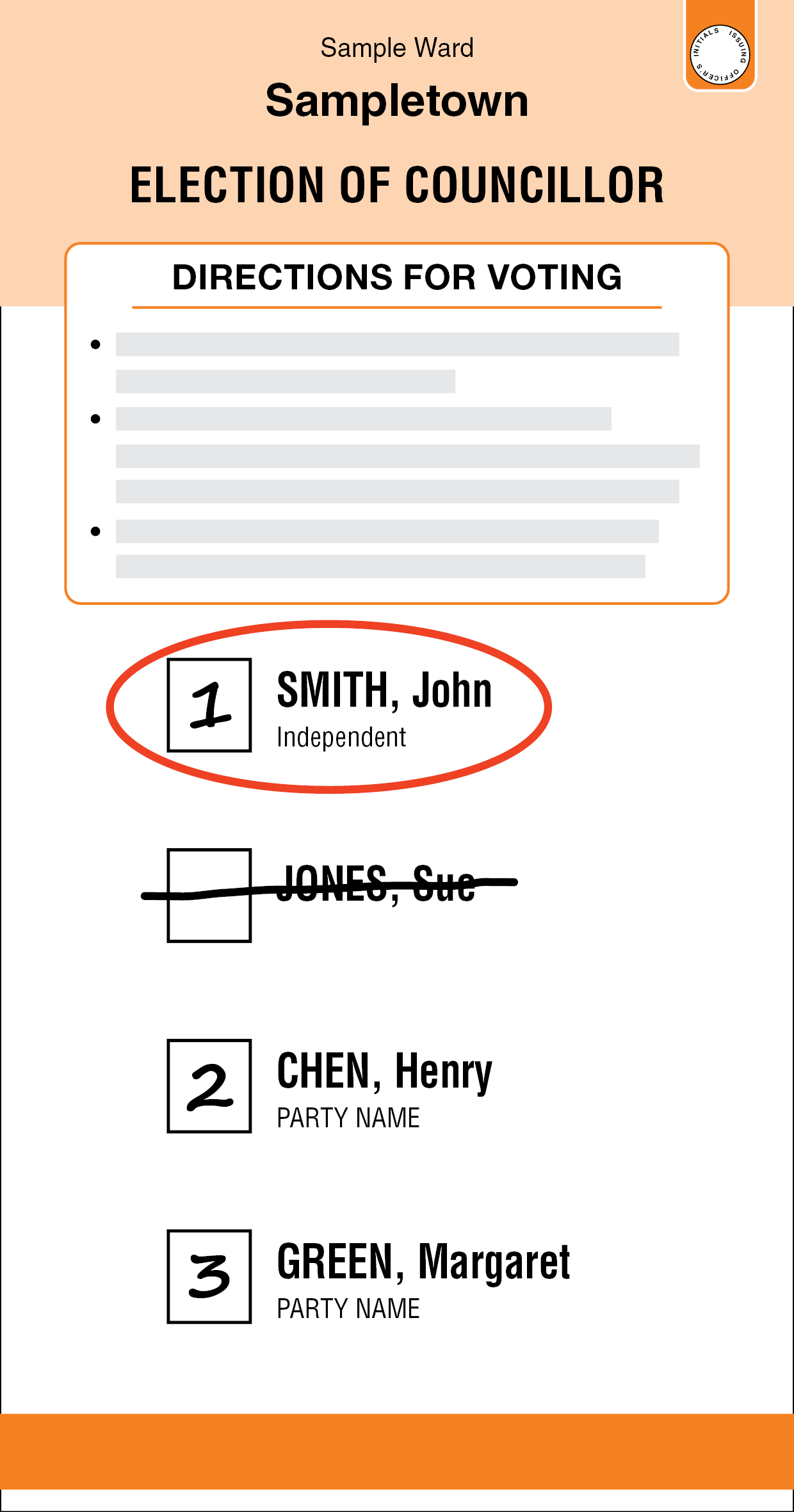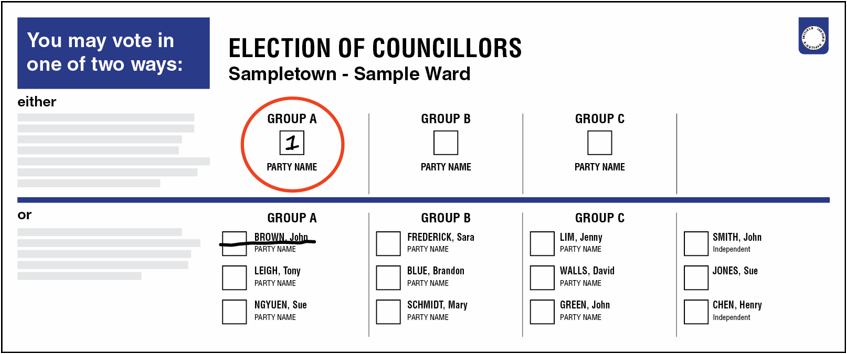Countback elections
 Countback overview Countback overview |
 Timeline Timeline |
 How countback works How countback works |
 Legislation Legislation |
 Councils using countback Councils using countback |
Countback overview
A countback election is used to elect a councillor to fill a casual vacancy, where the vacating councillor was elected under the proportional representation method (i.e. where two or more candidates were elected at a local government (ordinary) election). If there are multiple vacancies, a separate countback election is held for each vacancy.
A countback election has no impact on sitting councillors.
Potential candidates are those unelected from the ordinary election. The returning officer contacts all unelected candidates who may still be eligible to be elected. Interested candidates must submit a formal application.
Any candidates that do not apply to participate in the countback election (non-participating) cannot be elected.
If there are no eligible candidates, an attendance by-election must be held. If there is only one eligible candidate, that candidate is elected. If there are multiple eligible candidates, a countback election is conducted.
Council resources
View the Countback elections fact sheet (PDF 1MB).
Timeline
Countback elections can only be used for 18 months after the 2024 Local Government elections; that is, until 14 March 2026. The following summarises the steps involved in a countback election.


How countback works
The countback election will be run using the same ballot papers from the last ordinary election.
In the ordinary election, the preferences shown on every ballot paper are entered into a data file. This data file is used in the Proportional Representation Count Computer (PRCC) to run the countback election.
During the countback election for each ballot paper on which the vacating councillor received a preference, that preference is allocated to the candidate with the next highest preference on that ballot paper.
Example 1: Councillor Sue Jones resigns
Left: Original ballot paper. Right: Countback preferences.

|

|
Example 2: Councillor Sue Jones resigns
Left: Original ballot paper. Right: Countback preferences.

|

|
For ballot papers with groups, if the first candidate in a group is vacating their seat, the Above The Line preference for that group would be allocated to the second candidate in that group.
Example 3: Councillor John Brown resigns
Original ballot paper – Above The Line vote for Group A means:
-
1st preference for Brown
-
2nd preference for Leigh
-
3rd preference for Ngyuen

Countback preference – Above The Line vote for Group A becomes:
-
1st preference for Leigh
-
2nd preference for Ngyuen

For Below The Line voting, for each ballot paper with a preference for the vacating councillor, that preference would be allocated to the candidate with the next highest preference.
Example 4: Councillor John Brown resigns
Original ballot paper – Below The Line vote

Countback preferences – Below The Line vote

When a countback election is conducted, the first “elected” candidate, that is not a sitting councillor, is the candidate elected as the new councillor.
If a non-participating candidate (a candidate who did not apply) is elected, their status is changed to “ineligible” and the countback is run again. The preferences for this ineligible candidate will be reallocated accordingly. This process will continue until an eligible candidate is elected.
Candidates and council representatives can attend the countback via a Teams link or alternatively can attend in person. The newly elected councillor(s) and the council are notified of the result.
Frequently asked questions
For each countback election, a webpage will be published which will include key information.
Legislation
Countback elections are described in Schedule 9A of the Local Government (General) Regulation 2021.
View the Act and Regulation.
Councils using countback
Council must pass a resolution at its first meeting following the ordinary election to use countback to fill a casual vacancy.
Model Resolution
That Council, pursuant to section 291A(1)(b) of the Local Government Act 1993, declare that casual vacancies occurring in the office of a councillor within 18 months after the last ordinary election of councillors for the Council on 14 September 2024, are to be filled by a countback of votes cast at that election for the office in accordance with section 291A of the Act and directs the General Manager to notify the Electoral Commissioner for NSW of Council's decision within 7 days of this decision.
